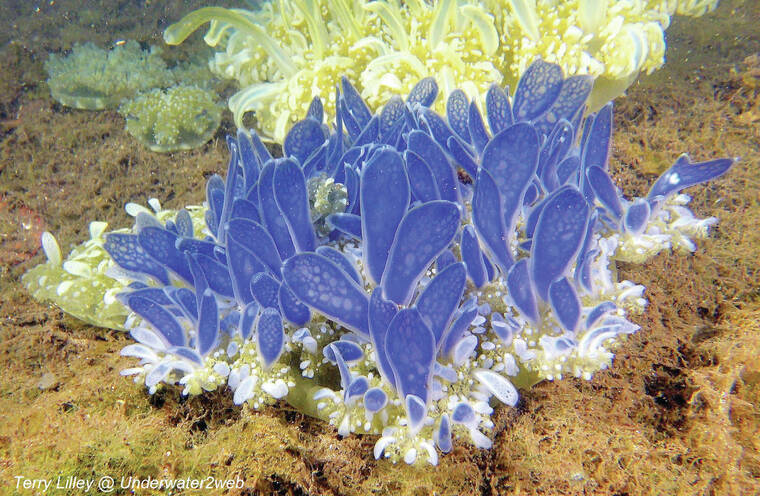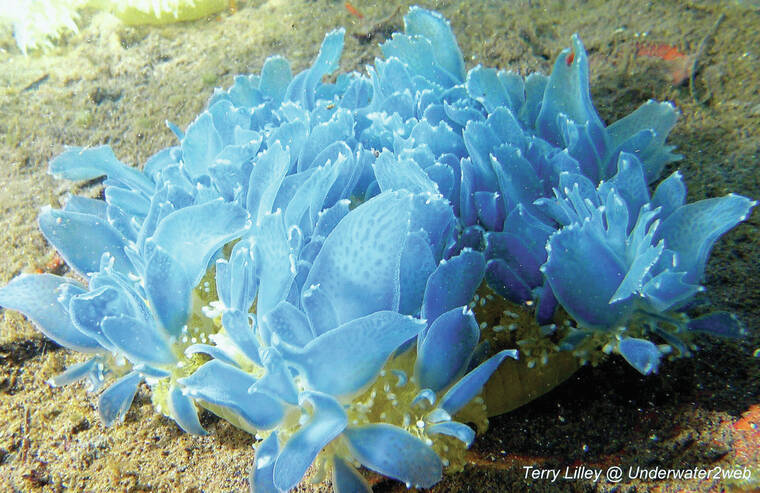All of us here in Hawai‘i who like to surf, swim or snorkel will eventually run into a jellyfish and get stung.
Most jellyfish have a bell-shaped body, of which can undulate, causing the jellyfish to go forward. Below the jellyfish are stinging tentacles that hang down and are filter feeders for the jellyfish as it floats around in the open sea.
Most jellyfish float on the ocean currents, blown around by the wind, so you are never quite sure when or where you will find one.
There is one kind of jellyfish that has adapted a whole new way of living in our shallow bays or estuaries. Instead of the stinging tentacles hanging down, the upside-down jellyfish lays on its bell-shaped body on the sea floor and its stinging arms go upwards. This allows the jellyfish to filter feed in shallow water, whereas the other species of jellyfish would have their tentacles dragging on the bottom if they tried to go into a shallow bay.
The upside-down jellyfish don’t move around much, and sometimes there may be a large number of them in a shallow lagoon.
These unusual jellyfish have ridged oral arms versus tentacles, so they remain pointing upwards to catch food. They filter zooplankton from the sea water, of which they eat with a little mouth at the base of each arm, so they have many mouths, not just one.
What is also unique about the upside-down jellyfish is they grow algae in their tissue called zooxanthellae. In the shallow water there is lots of UV light from the sun, and the algae in the jellyfish tissue produces sugar the jellyfish feed on. They basically carry around with them their own veggie garden they harvest for food.
The upside-down jellyfish is usually white, but in some lagoons the algae in their tissue may be blue, green, brown or even purple. It is not yet clear as to why some of these odd jellyfish have bright-colored arms and some don’t. In one small lagoon I counted over 100 upside-down jellyfish just laying around on their heads in two-foot-deep water, and each jellyfish was a different color! Why they have different colored tissue is still quite a mystery.
The upside-down jellyfish are not native to Hawai‘i, but were accidentally introduced many years ago and now they are common in lagoons like Kane‘ohe Bay Magic Island Lagoon. They are super-fun to look at, but don’t get too close, as they can send out tiny stinging cells like little missiles that lodge into your skin and feel similar to a bee sting. You can see the upside-down jellyfish in living color in my new movie out soon about the marine life of the Bahamas that will be posted on my YouTube channel at Underwater2web.
•••
Terry Lilley is a marine biologist living in Hanalei. He is co-founder of Reef Guardians Hawai‘i, a nonprofit on a mission to provide education and resources to protect the coral reef. To donate to Reef Guardians Hawai‘i go to www.reefguardianshawaii.org.



